
INTRO 04
VERNER PANTON - MORE RELEVANT THAN EVER 06 HOME ENTRANCE 10 AT HOME WITH/ MIA MORTENSEN 24 DINING 28 LIVING 50 AT HOME WITH/ MICHAEL DANSK 68


INTRO 04
VERNER PANTON - MORE RELEVANT THAN EVER 06 HOME ENTRANCE 10 AT HOME WITH/ MIA MORTENSEN 24 DINING 28 LIVING 50 AT HOME WITH/ MICHAEL DANSK 68
The purpose of our collection is to bring excitement to everyday life and help materialize your personal expression through products that are not only aesthetic and purposeful, but also unique and timeless and that adds value to your space.
Being able to choose what feels right to you is essential, and that is what the Verpan collection offers. We continuously tap into Panton’s heritage when re-imagining products and solutions that help us solve modern challenges and rethink the ways we live, work and meet.
Our collection of furniture, lighting and accessories is available in a variety of colours, finishes, fabrics and more that lets you get creative and allows you to find the pieces that positively influence your wellbeing.
Verner Panton fully believed in the importance of creating an attractive space over the importance of the single object. He had a holistic approach to design and once stated; “the relationship to the environment is much more important than a single chair or object. The space, the colours, the furniture, the textiles and the lighting must be thought and experienced together. The attractive environment can only be created when you really master the whole”.
Explore our collection and get excited.
Verner Panton (1926-1998) was a man of many facets. His journey began with early dreams of making it as an artist, which later led to an education in architecture and him finally finding his place in the world of design. Along the way he was mentored by the likes of Arne Jacobsen and Poul Henningsen, who both were instrumental in shaping and influencing him on his path to become one of the most prominent designers of the 20th century.
Throughout his career, Panton enthusiastically embraced new materials and discovered new ways to approach product- and spatial design. His ability to bridge healthy ergonomics and purposeful functionality with imaginative, organic shapes and bold colours - without ever compromising on quality or workmanship - was a constant in his experimental design process and still highly recognized today.
Despite of his provenance and large contribution, Panton was always considered an outsider among his contemporaries of the mid-century Danish Modern era. Always being on the forefront of innovation meant he was never considered mainstream, nor did he aspire to be. He was always more interested in raising questions and challenging the status quo. He was a provocateur. A rebel.
A famous quote by Panton to describe himself and his work; “The main purpose of my work is to provoke people into using their imagination. Most people spend their lives in dreary, grey-beige conformity, mortally afraid of using colours. By experimenting with lighting, colours, textiles and furniture and utilizing the latest technologies, I try to show new ways to encourage people to use their fantasy and make their surroundings more exciting”.
His work ultimately led him to pursue a future outside of Denmark to find suited collaborators and partners, and he settled in Basel in 1963. During his career, Panton worked with some of the most prolific design companies, carving out a name for himself both in Denmark and abroad.
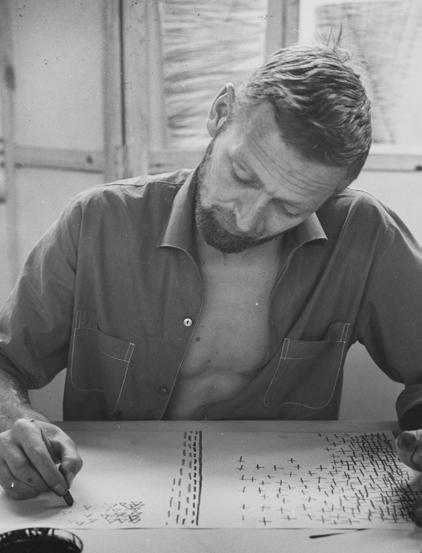
Panton also became a sought-after interior designer. Among his most recognized installations are the Visiona 0 and Visiona 2 furniture fairs in 1968 and 1970, the 1971 remake of the Varna restaurant in Aarhus and of course the 1969 complete installation for German publisher, Der Spiegel’s main offices in Hamburg.
Panton’s iconic designs have emerged as contemporary design classics – as strikingly inventive now as they were 50 years ago.
As a reflection of individual style and taste, the home represents a personal concept of wellbeing realized through the use of space, objects, light and colours.



For long, the Pantop series has been a staple of the Verpan collection. The Pantop line’s idiom is best described as decorative and elegant.
Keeping with its bell-shaped widely flaring shade, Pantop offers an almost optimal combination of ambient and functional lighting.
The new Pantop in new colours and variants is designed to fit into a wide number of settings and interiors. The table lamp fits perfectly in the window sill, bookcase or counter, and the pendant works equally well on its own as it does in clusters giving you the freedom to be creative and create your own personal expression.
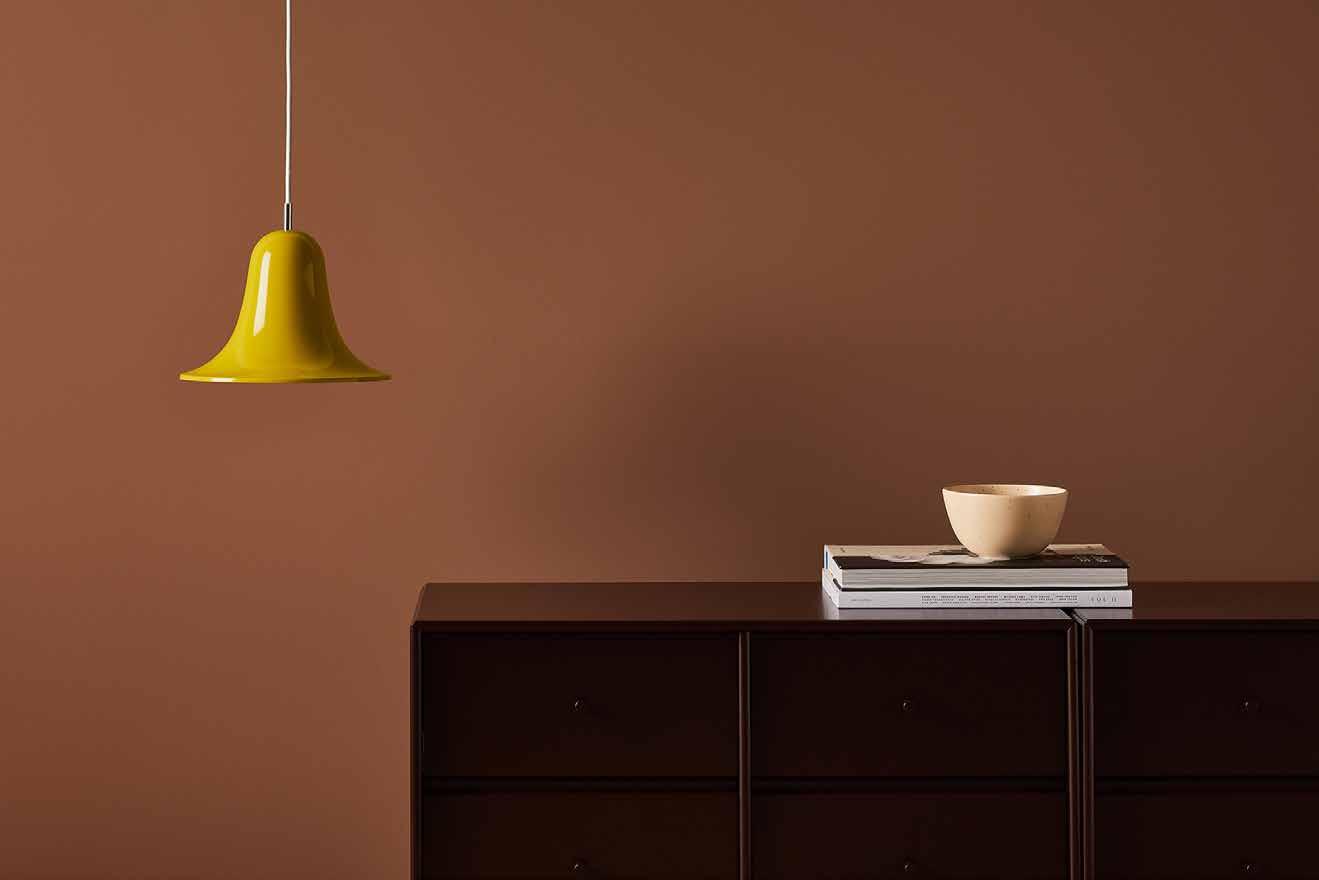


Many regard the Fun collection as one of Verner Panton’s greatest masterpieces in the field of lighting design. Ever since 1964, this pendant lamp has kindled joy and a wealth of stories. The idea for Fun came from Panton’s desire to design a lamp, that would cast a diffused light, and have an optimal effect in a coloured interior.
In terms of materials, Panton originally worked with metal discs but was curious to create something brand new and during a visit to Malaysia, he found what he was looking for: delicate seashells with a vibrant, pearly texture.

When the air set them in motion, they produced the most exquisite, delicate sound. At the same time the UN were looking for ways to generate more jobs in developing countries. Panton could help this effort by using seashells for his Fun lamps.
Today, the Fun collection is available in a wide variety of finishes, sizes and include pendants, floor, table and wall pieces.

Panton designed the Barboy at a time when he was inspired by free, mobile rooms. The idea was that spontaneous conversations could take place without bumping into obstacles.
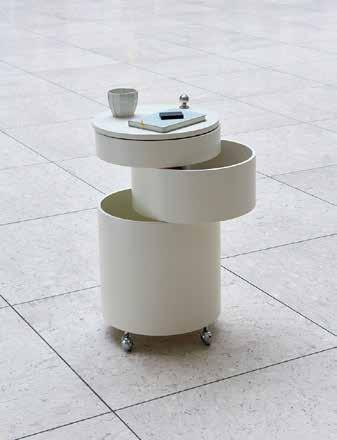

It was from this spirit that the idea for the Barboy emerged: a mobile storage unit, which, apart from serving as a drinks cabinet in the living room, could also work as a practical little chest of drawers.
Panton’s goal was to design a piece of furniture, which, besides providing storage for bottles, glasses and other cocktail utensils, would also be perfect for use in a bedroom, hallway or office.

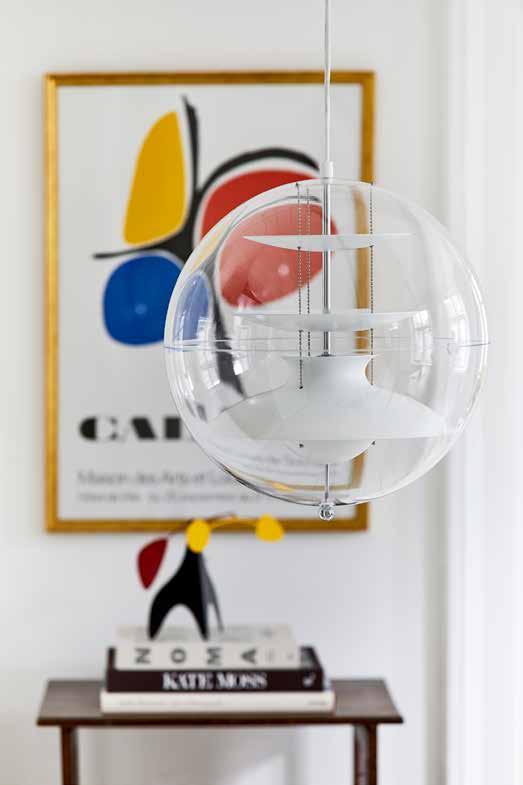

Mia Mortensen is a professional photographer and content creator with a preference for midcentury design influences.

My name is Mia and I work as a fulltime photographer and I also do creative content, styling and SoMe images. I also run a personal Instagram profile under the handle @still_sunday.
I live in Fredericia, Denmark with my boyfriend and my son. I am from Fredericia, but we have lived 8 years in Aarhus. We fell in love with the house because of the midcentury design and 70’s vibe and architecture, which we both love.
I started photographing my old small townhouse in Skanderborg (we lived there in between Aarhus and Fredericia in 3 years), and “hunting” old midcentury furniture to match the home. It became more than a hobby, and now I photograph mostly interior, home stories and interior design. I love to create small spaces around the house with designs from different time periods to achieve tension and contrast.
All around me! Shapes, colours, seasons. I always
ask myself how I want to feel when I enter the room, and that is how I choose colours and interior - to emphasize the current feeling.
What is your relationship with Verner Panton?
I have always loved his design, and one of my first thrift shop buys was 3 pantonova lounge chairs from 1971. I love playful colours combined with industrial and functional design, and I think VP achieved that in his various designs.
How do you see his influence today?
I have always seen Verner Panton as a designer who was ahead of the needs of society. His focus was on how we use the space around us during everyday life, and making it fun and creative. I definitely see it everywhere today - we choose to surround us with aesthetic things, but we also want it to influence our emotions and creativity - we want to be able to change a room so it matches our current needs and feelings.
Favorite design from the Verpan collection?
The Moon lamp! It is clever, beautiful and functional. It is for me pure perfection when it comes to express design through shape/form.
Mia is a sponsored partner of Verpan.






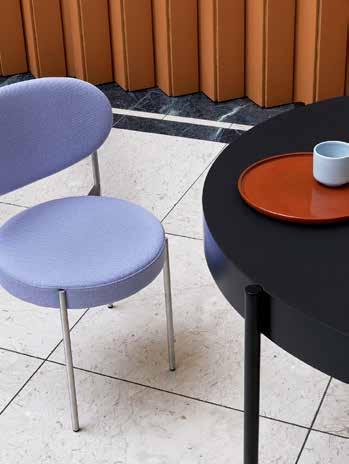
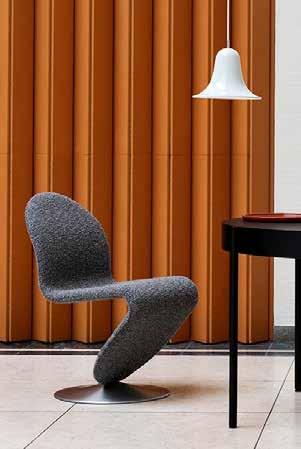



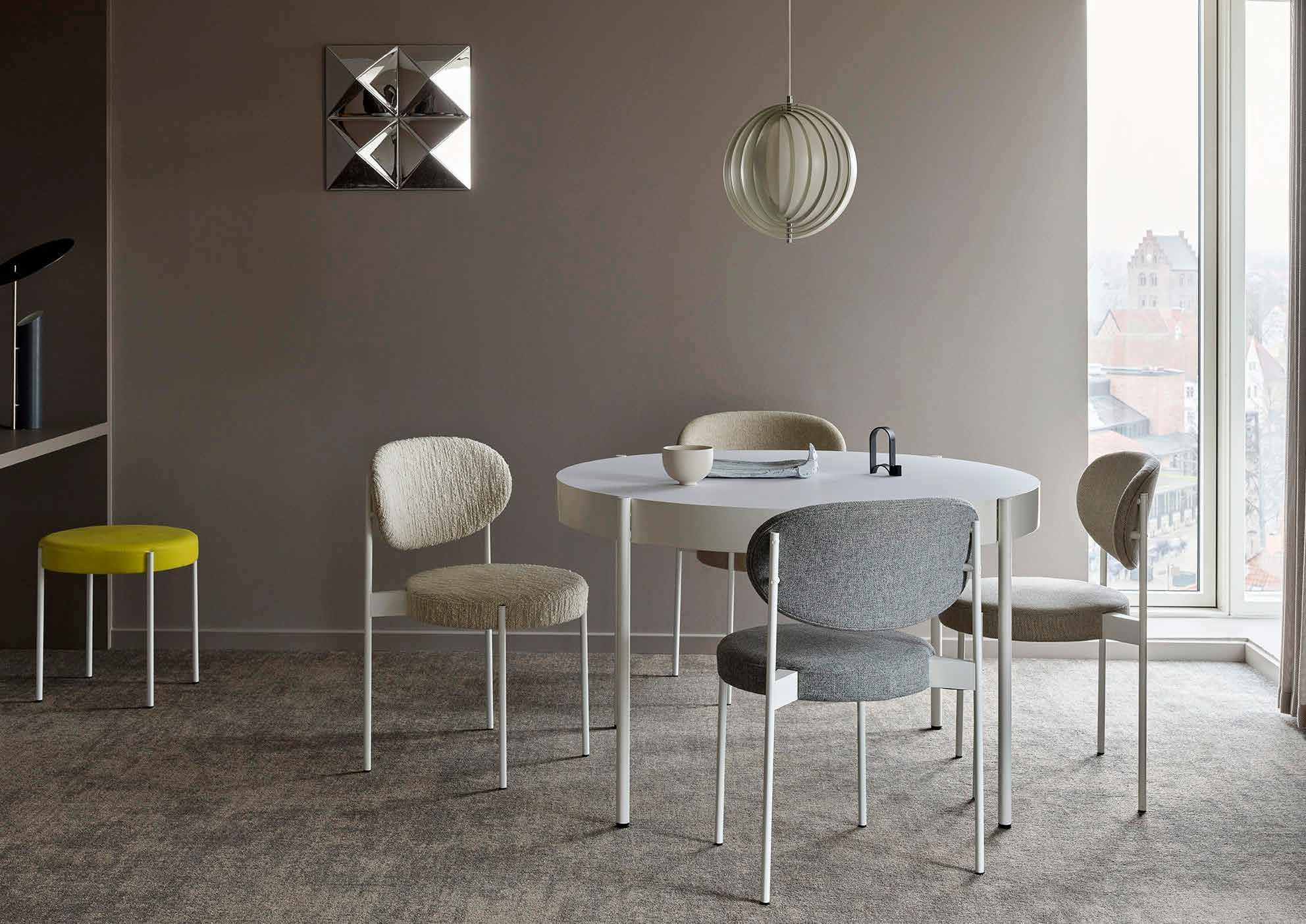
In 2015, Verpan re-discovered a forgotten dining chair in the Panton archives. The design was unknown to most, as it only had a brief production run following its original release in 1967.
Based on Panton’s original drawings and notes, Verpan reimagined the beautiful design to modern standards. Verner Panton had designed the Series 430 to be a study in simplicity, while providing the same comfort as an armchair.
He did so by applying traditional webbing to the fully upholstered seat to adjust for body weight and create a wide nestling backrest and place it on a slender elegant frame that mounts on the outside of the seat and back.
The Series 430 chair truly is a multipurpose chair and can easily be applied anywhere in a home and with five different frame colours to choose from and a wide vairety of upholstery options, the Series 430 can be customized to suit any desired mood, setting or occasion.
Fun fact - the Series 430 is the only four-legged chair designed by Panton.



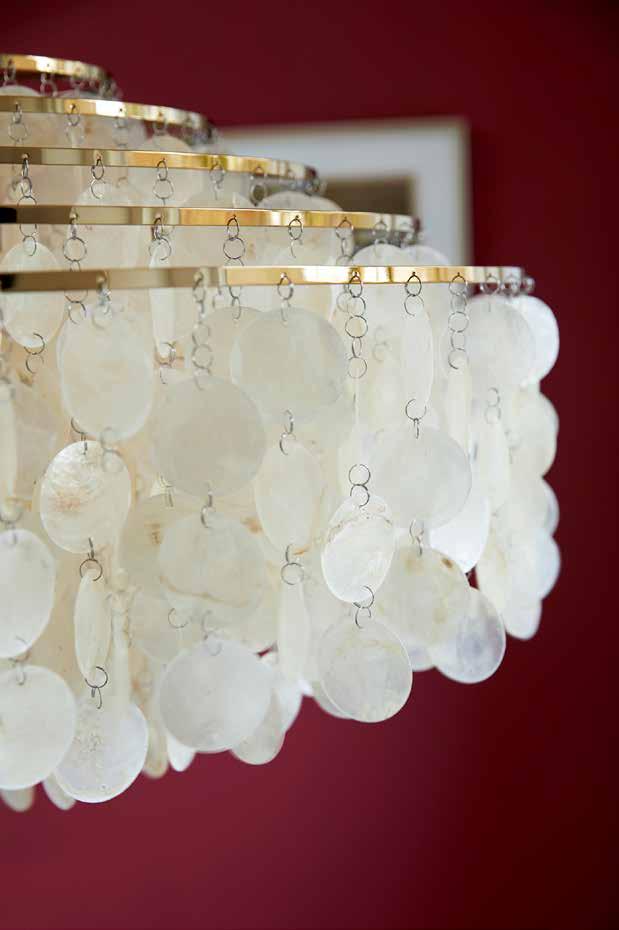

Designed in 1960, the Moon represents one of Verner Panton’s earliest designs in lighting.
The iconic pendant is characterized by its fan-like design with ten ring-shaped aluminium lamellae perfectly positioned to provide a soft, ambient and glare-free light. The blades reflect and filters the light and the pendant changes its appearance depending on the angle at which you view it.

Due to its simplicity in design and white finish, the Moon lamp is incredibly versatile and can work in a number of settings – as a single piece or in clusters.





To refer to Panton’s Welle furniture as mere lounge furniture could be considered an understatement. Unmistakably Panton, these wildly imaginative organic shapes represents a sense of freespirited thinking, unhinged from conventions and tradition –instead sparking our emotions, curiosity and creativity.
Welle is available in six different silhouettes that can either stand alone or go together to create an entire landscape.
The pieces are light and easy to move around.

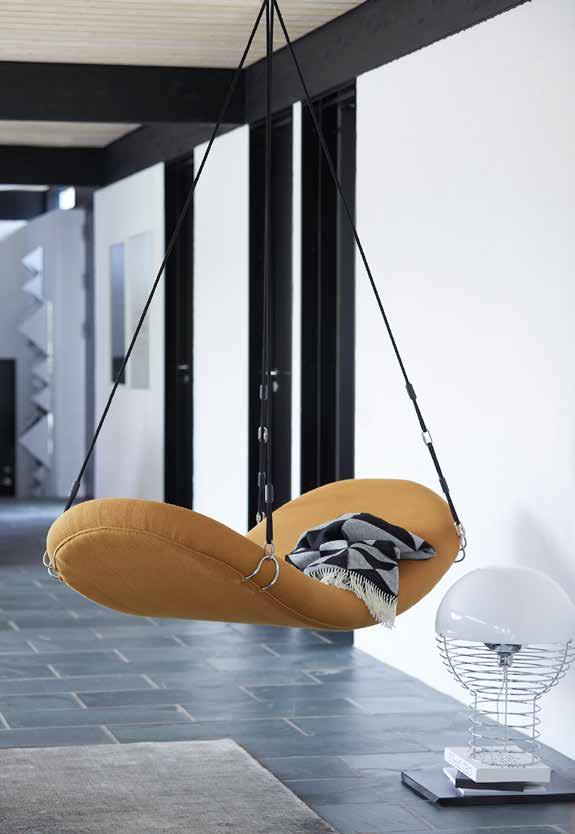

When ordinary just wont do. Designed by Verner Panton in 1969, the Cloverleaf design stands out as one of his most unique works – sculptural, organic aesthetics and functional qualities combined in a modular sofa offering almost infinite opportunities for personal expression.
Cloverleaf was conceived as a sprig of clover, meandering and unfolding as it gets longer. In the middle, the seat is divided by a backrest, which wriggles out of the seat. As well as providing the necessary back support, it also shields you from people sitting on the other side. This one-of-akind sofa is one of Panton’s masterpieces.



Originally conceived in 1969 by Verner Panton, the VP Globe is arguably the most recognized Panton lighting design.
The decorative pendant features a crystal clear transparent acrylic outer sphere with five internal reflectors suspended by three steel chains.

A little-known story behind the inspiration of Verner Panton’s lighting is the Venice influence. Panton was known for his desire to explore, travel and experience different places and cultures. One of his favorite destinations was Venice, Italy, and he paid several visits to the famous ‘city on the water’.
It was in fact during one of these visits, that he fell in love with the slightly rose-coloured light emitted by the old street lamps in the city – so much so that he wanted his future lighting designs to simulate that unique experience.
The VP Globe is perhaps the most successful execution of this early inspiration, as its special layered design paired with the acrylic globe emits a warm, soft and ambient light – a signature of Panton.
True to Panton’s creative approach, the VP Globe is available in various configurations and sizes – exploring different materials and expressions.
All VP Globes are assembled 100% by hand in Denmark.


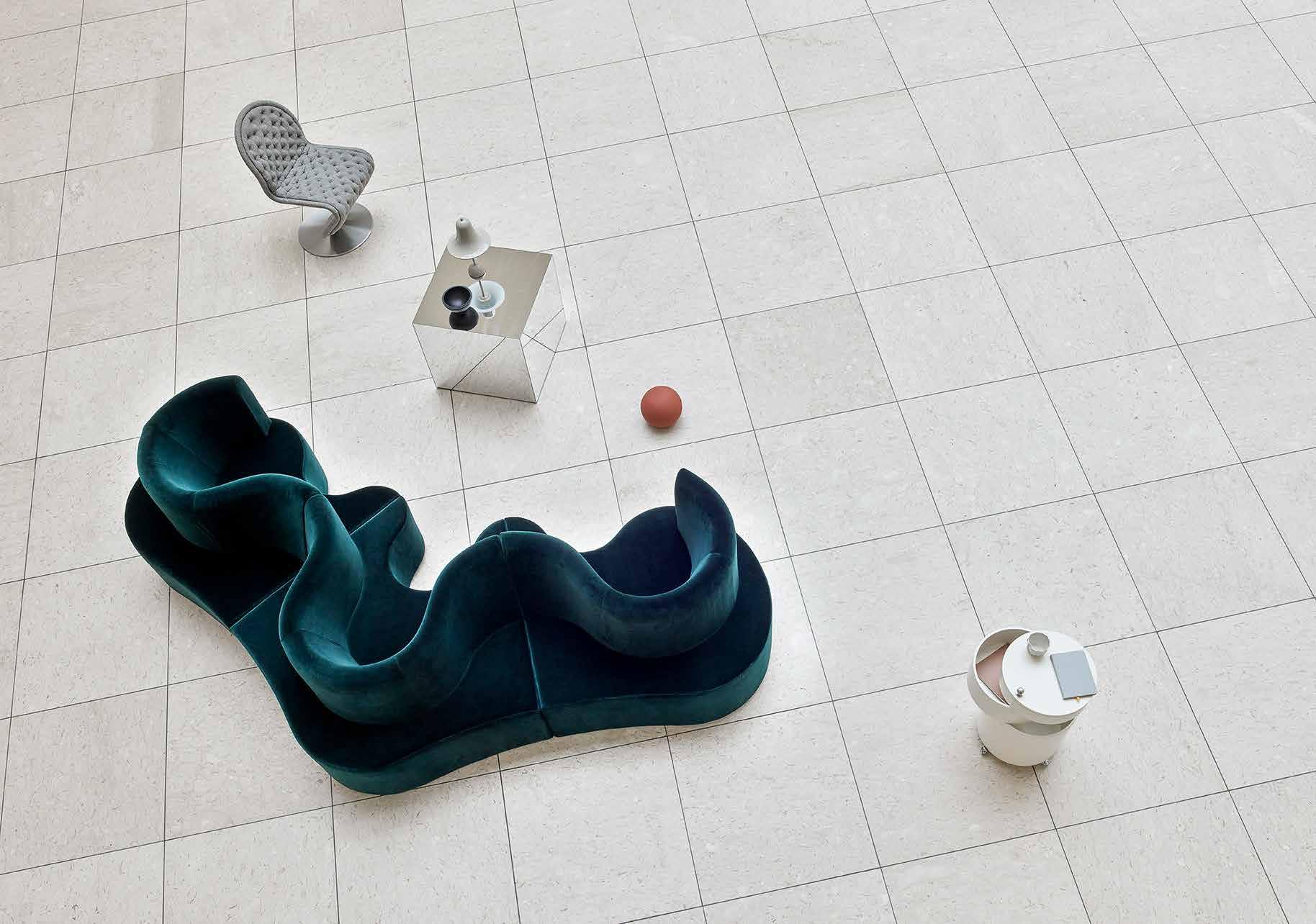
Meet Michael Dansk. A Copenhagen-based creative who since childhood has been intrigued by great design and today has turned this fascination into a career.

Tell us a about yourself. My name is Michael. I am a 32-year-old Copenhagen-based creative consultant working in the field of culture and design. Basically, what I do is tell stories in images and words to bring brands to life. For many years, I worked as a magazine editor before I started my own business a few years ago. Besides this, I share my passion for interior, art and design via my Instagram channel @MichaelDansk. My take on interior is maybe a little more colourful than the typical Scandinavian, but colour and art simply inspire me. I live with my partner and two children in the heart of Copenhagen’s lively Nørrebro neighbourhood surrounded by all sorts of cafes, bars and small shops.
How did you get into interior design? I have always loved interior, growing up in a family of architects, I knew all the big names in Danish design before I was even 10 years old. Until 5 years ago, it was merely a hobby for me. I was working as a fashion editor for a DK magazine and one day, I was simply asked to cover all interior related content as well. From there my career sort of shifted more and more towards interior and design, and today almost all of my clients are within this area. So in a way, my childhood passion ended up growing into a profession.
Where do you find inspiration? I am lucky to work with a great number of talented people within the field of interior design on a daily basis, so I really get a lot of inspiration from the people around me and their individual ways of working. Besides this, art is a massive inspiration to me. I collect works by young Scandinavian artists, and often use works of art to set the mood in interior styling and other visual projects. I have always been fascinated by names like Vilhelm Lundstrøm, his way of combining colour
and shape is truly genius. Besides this, I think my style is very much influenced by different elements. My background in fashion, my love for travels and culture, my passion for art and my interest in architecture.
What is your relationship with Verner Panton?
Panton and I go way back. I grew up with several Panton designs in my childhood home, and remember seeing a fantastic Panton exhibition at Trapholt museum, when I was a kid. Naturally, the Panton Globe was the first lamp I bought, when I got my first apartment in Copenhagen 10 years ago. It is hard to pinpoint, what has been drawing me to Panton’s design. I think it might be his playful approach. I really like his way of experimenting with materials, shapes and colours in a fun and interesting way. Even if many of his iconic pieces are about 50 years old now, they still seem relevant, and have a futuristic edge that I really enjoy.
How do you see Pantons influence today? Many of Panton’s designs have a rather futuristic look to them and have kept that to this date. In a way his design keeps feeling fresh and contemporary. I think his approach to form, material and colour is somewhat different to many other big DK designers, which makes him stand out and makes his design feel rather unique. Also, there is a lot of focus on textures and colour at the moment, and his original designs truly show how to incorporate colour and unusual materials in a fun and easy way.
Favourite design from the Verpan collection? For me, it is hard to pick a favourite. The Globe is probably the design I liked for the longest time. Recently, I have grown to like some of his furniture pieces more and more. He designed some super cool coffee tables and I really like the System 1-2-3 series in general.




Every product in our collection represents timeless style and is crafted with the intention of long term use and enjoyment. This is not just for right now, it is for the future.
At Verpan, we are aware of and care about our social and environmental responsibility, and we are dedicated to playing our part in creating a sustainable future for the design industry.
We are committed to honoring the heritage of Verner Panton and will never compromise on quality, design or originality. Sourcing materials that fulfills our promise while minimizing the negative impact to the environment is a constant journey, and we still have a long journey ahead of us.
Our commitment to be more sustainable includes efforts towards improving the design process, manufacturing, packaging and shipping. We continuously try to find new ways of designing and producing our products, focusing on approved and sustainable materials.
We continuously strive to offer a collection of beautiful and high quality products with timeless appeal that transcends trends and remain relevant for generations to come.
We always source the materials best suited to ensure the integrity of the product – in terms of aesthetics, quality and cost. We introduce recyclable materials when possible and strive to develop solutions for easy assembly and disassembly – making it possible to replace and ultimately dispose damaged parts properly.
FSC® Certified Wood Wood is used throughout our collection and we strive to implement wood from sustainable and traceable forestry. For the majority of our collection, including loved products such as the Cloverleaf Sofa, Series 430, Welle and more, we have already introduced FSC® Certified wood.
FSC is a global non-profit forest certification system promoting the responsible management of the world’s forests, protecting them for future generations. The organization works against deforestation, protects animals and plants, and ensures that foresters receive decent wages, proper training and safety equipment.
Plastic materials represents a large part of Panton’s design heritage and also plays a big part of the Verpan collection. When handled responsibly, plastic can function as a sustainable choice, as it is a very durable material that ensures a long product life. Whenever possible, we implement recyclable PP and PE, ensuring that products at end-of-life can be granulated and reused.
Packaging represents a significant part of our footprint and we continuously work to implement better and more sustainable solutions. However, first priority is always to protect the product and minimize the risk of damage. Secondly, we focus on minimizing packaging and avoiding unnecessary plastic components.
We want to work with suppliers that live up to the same high standards as we set for ourselves to ensure proper standards in the factories. We strive to maintain a close and solid relationship with our suppliers, and we frequently visit the factories to guide and support our suppliers.
SERIES 430 CHAIR
Verner Panton /1967
SERIES 430 BAR STOOL 65
Verner Panton /1967 54 cm 51,5 cm
100 cm / SH 65 cm
Verner Panton /1967
110 cm / SH 75 cm 82 cm / SH 47 cm 54 cm 51,5 cm
FSC-certified wood for seat and back
Elastic band webbing in the seat
CMHR (CRIB 5) or HR (Cal 117) foam
Brushed stainless steel frame (steel) Painted or plated metal frame Felt feet
SERIES 430 STOOL
Verner Panton /1967 47 cm 46 cm 46 cm
Material
FSC-certified wood for seat and back
Elastic band webbing in the seat
CMHR (CRIB 5) or HR (Cal 117) foam
Brushed stainless steel frame (steel) Painted or plated metal frame Felt feet
Black Brass
FSC-certified wood for seat and back Elastic band webbing in the seat CMHR (CRIB 5) or HR (Cal 117) foam
Painted or plated metal frame Felt feet
SYSTEM 1-2-3 DINING
Verner Panton /1973 86 cm / SH 47 cm 50 cm 60 cm Alu Chrome
Frame options
Material
Brushed aluminium base or chrome plated butterfly base Steel frame VOSS foam Various upholstery options
SERIES 430 BAR STOOL 75 Black Brass
54 cm 51,5 cm
FSC-certified wood for seat and back Elastic band webbing in the seat CMHR (CRIB 5) or HR (Cal 117) foam
Painted or plated metal frame Felt feet
SYSTEM 1-2-3 LOUNGE
Verner Panton /1973 Alu
89 cm / SH 38 cm 50 cm 82 cm
Frame options Material
Brushed aluminium base Steel frame VOSS foam Various upholstery options
Verner Panton /1969
78,8 cm 253,5 cm
Frame and base in FSC certified wood
CMHR (CRIB 5) or HR (Cal 117) foam for seat and backrest
Pocket springs in seat Pillows filled with natural feathers
Verner Panton /1969 359 cm
113 cm 130 cm 115,5 cm 114,5 cm
FSC-approved wood frame (18 mm/0.7” plywood & pine wood)
CMHR (CRIB 5) or HR (Cal 117) foam for seat and backrest
Metal interlockers
Adjustable nylon glides
The system consists of 4 modules; left, right, middle and extension for custom configuration options.
130 cm 306 cm 383 cm
95 cm
200 cm 150 cm 80 cm
Steel
Verner Panton /1964 115 cm 229 cm
FSC-certified form pressed plywood Supporting steel frame PU foam Polyester ropes with steel fixtures
FSC-certified wood frame (15 mm/0.6” plywood)
CMHR (CRIB 5) or HR (Cal 117) foam
WELLE 2 LOUNGE CHAIR Verner Panton /1969 108 cm
80 cm
FSC-certified wood frame (15 mm/0.6” plywood) CMHR (CRIB 5) or HR (Cal 117) foam
70 cm 102 cm 162 cm
240 cm
FSC-certified wood frame (15 mm/0.6” plywood) CMHR (CRIB 5) or HR (Cal 117) foam
63 cm 145 cm
FSC-certified wood frame (15 mm/0.6” plywood)
CMHR (CRIB 5) or HR (Cal 117) foam
WELLE 4 LOUNGE CHAIR Verner Panton /1969 WELLE 5 LOUNGE CHAIR Verner Panton /1969 108 cm
WELLE 6 LOUNGE CHAIR Verner Panton /1969
40 cm
WELLE 3 LOUNGE CHAIR Verner Panton /1969 54 cm
40 cm Material
FSC-certified wood frame (15 mm/0.6” plywood)
CMHR (CRIB 5) or HR (Cal 117) foam
FSC-certified wood frame (15 mm/0.6” plywood) CMHR (CRIB 5) or HR (Cal 117) foam
The Verpan Upholstery Program is an overview of textile and leather available for the Verpan upholstered furniture. The listed fabrics and leathers are available in all colours.

In addition to the options listed, we have tested several other fabrics and entered trade agreements with a number of other suppliers, which enables us to answer most customer needs. We are also happy to upholster furniture using customer’s own materials (COM) with extended lead times.
For special requests, please contact our sales team.
Frame options / Shells
Verner Panton
Acrylic outer top and bottom shell Reflectors are suspended in steel chains Canopy made from chrome plated or painted metal Reflectors are available in brushed or painted aluminium, brass plated aluminium, opal glass, coloured glass.
Acrylic outer top and bottom shell Reflectors are suspended in steel chains Canopy made from chrome plated metal Reflectors are available in aluminium and opal glass.
Acrylic outer top and bottom shell Reflectors made from lacquered aluminium Reflectors are suspended in steel chains Canopy made from lacquered metal
Aluminium shades Polished aluminium (alu) or powder coated finish (yellow) Canopy in same colour/finish as lamp.
Verner Panton /1977
Material
Material
Material
FUN 2TM TABLE LAMP
FUN
WIRE
FUN 1STM FLOOR LAMP
WIRE FLOOR LAMP
Frame
Frame
REFLECT TABLE LAMP Verner Panton /1980
FUN 1WM WALL LAMP
Frame